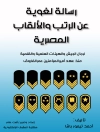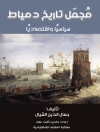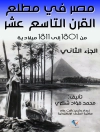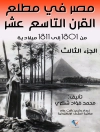The Middle East, often referred to as the cradle of the three monotheisms, is saturated with symbolism. Situated at the crossroads of Asia, Africa, and Europe, it is a land marked by the rich confluence of religions and peoples. It has also been the focal point of endemic tensions and conflicts, many of which stretch back into the mists of time.
In this new history of the Middle East, Jean-Pierre Filiu looks beyond religion and focuses his attention on the processes by which powers and their areas of domination were established over time. His starting point is 395, the year when the Roman Empire was divided into eastern and western halves: at that point, the Middle East emerged as a specific entity, freed from external domination, and a Christianity of the East asserted itself, turned towards Byzantium rather than towards Rome. From this point on, Filiu follows a strictly Middle Eastern dynamic, tracing the rise and fall of powers linked to the three principal centres of Egypt, Syria, and Iraq and recounting the procession of empires, invasions, and assertions of imperialist ambition that have characterized the region since then. The book closes in 2022, when the men and women of the Middle East were still struggling for the right to define their destiny by telling their stories in their own voices.
This magisterial and up-to-date history of the Middle East will be essential reading for students and scholars and for anyone interested in the history and politics of one of the most important and contested regions of the modern world.
Daftar Isi
List of Maps
A secular history
1. Byzantines, Sassanids and Arabs (395-661)
2. From the Umayyads to the Abbasids (661-945)
3. The era of the two caliphates (945-1193)
4. Sultans and invaders (1193-1501)
5. Ottomans and Safavids (1501-1798)
6. Colonial expansion (1798-1912)
7. Reforms, renaissance and revolutions (1798-1914)
8. The time of mandates (1914-1949)
9. The Cold War and the Arab-Israeli conflict (1949-1990)
10. The life and death of the American Middle East (1990-2020)
Conclusion. The cradle of crises
Notes
Index
Tentang Penulis
Jean-Pierre Filiu is Professor of Middle East Studies at Sciences Po.












